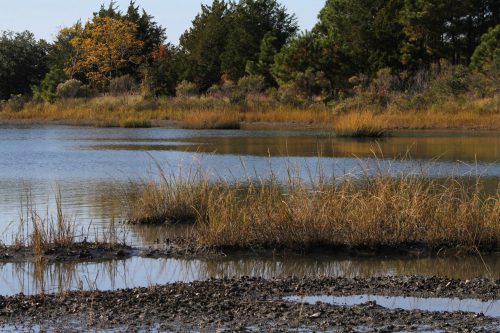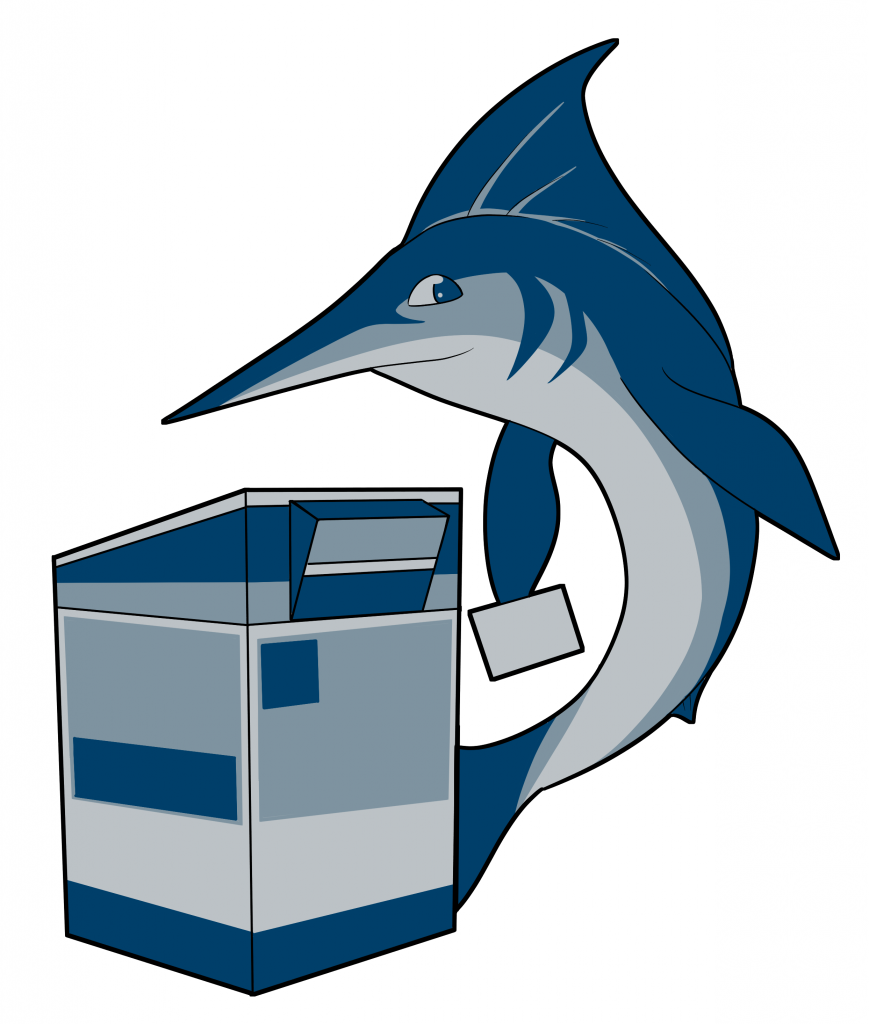Coastal wetlands protected by the Chesapeake Bay Foundation at Pleasure House Point, near the Brock Environmental Center.
McKenna Howenstine|Marlin Chronicle
Isaac Fick|Marlin Chronicle
NASA and the local nonprofit organization Wetlands Watch reported that Virginia will lose 78% of its tidal wetlands by the end of the century, and half of that will be lost even if action is taken.
“We have some of the highest rates of sea level rise in the whole United States,” Dr. Elizabeth Malcolm, professor of Ocean and Atmospheric Sciences and director of Sustainability said. “It’s definitely a big issue for this region and it’s not going to go away.”
“The metropolitan area in the U.S. [is] the second most vulnerable to sea level rise,” Dr. Maynard Schaus, professor of Biology and Environmental Science and coordinator of Sustainability Management said.
Schaus explained the cause of vulnerability. “The land is being compacted at the same time that the sea level is rising,” he said.
“Coastal wetlands are important for humans as well as for the organisms that rely on those ecosystems,” Malcolm said.
She added that coastal wetlands, “provide habitat for organisms that are also commercially important in terms of fisheries.”

Wetlands, like these at Pleasure House Point near the Brock Environmental Center, are in danger of disappearing.
McKenna Howenstine|Marlin Chronicle
Malcolm outlined other benefits of wetlands, including preventing flooding and pollution. “They help buffer when we have flooding or storms,” she said.
“A lot of times, … pollutants will get trapped in the wetland and that helps prevent pollution from further going out into the Chesapeake Bay or the ocean,” Malcolm said.
Schaus outlined long term consequences of this climate change. “It affects storm frequency, it affects patterns of drought, it affects … long term climatic patterns and how those are going to change,” Schaus said.
He said that the same crops likely will not be able to be grown in the same regions, and “[we’re] going to have to move plants northward to help them extend their range northward so they don’t get wiped out.”
“People didn’t realize their value,” Malcolm said. She explained that in the past, wetlands were filled in and developed, which is resulting in their loss. “Now we’re losing a lot of them with sea level rise,” Malcolm said.
“If you have slow sea level rise, the wetlands might be able to migrate inland,” Malcolm said. “Sea level rise has to be slow enough that that can naturally happen.”
With roads and other developments in their path, Malcolm said, “If they’re trying to migrate inland they need a place to migrate.”
“One road that I drive by pretty regularly has marsh on both the left and the right side, and then in really high tide events and especially during the king tide, the whole road floods,” Schaus said.
“How long before we lose that road? Should we be doing things to let nature take that area back over? Probably,” Schaus said.
“We’ve been trying to touch on climate change and environmental issues in a lot of our coursework,” Malcolm said. “Even the business major. All those students have to take one course related to the environment so that they’re thinking about the environment … when they go out and are leaders in the business world.”
Malcolm said that to protect wetlands, “it’s going to take a big effort from community organizations like Wetlands Watch as well as governments.”
In an effort to increase community engagement, Wetlands Watch hosted their annual Catch the King event in Portsmouth starting on Oct. 17, and ending on Oct. 20. This event collects flood data by acquiring volunteers to map the highest tides of the year, Perigean, or ‘King’ tides.
“It was a way for us to … have a finger on the pulse of what the needs of specifically the Portsmouth community is in terms of sea level rise,” Samantha Silvia, senior and Social Work major, said.
Silvia worked with Garry Harris, who helped lead the event, for her senior capstone project.
Silvia shared her highlight from the event, which, “was not only measuring, but getting that … full scope view at least for the city of Portsmouth, to get an idea of really what’s going on, and to get the science behind it, as well as the local impact.”
Another benefit of the event, Silvia said, was, “to also generate that interest in the community participating in science at the community level.”
Harris emphasized community and the effects sea level rise has. “It does not impact all communities equally,” he said. “We need to understand … these existing disparities in communities and the impacts of sea level rise in terms of cumulative impacts.”
Silvia described the sustainability of living in a coastal community, proposing that, “the problem is people who don’t have the money, finances, resources to be able to move out of that situation. What are they going to do?”
“Some people can easily get up and move … Others, they can’t do that,” Harris said. “They have to put up with … occasional heavy tidal surges that inundate their homes. They have to put up with the inaccessibility of services.”
“We’ve been looking at science through a lens of social justice and racial justice and climate justice and environmental justice and health disparities,” Harris said.
Harris explained the importance of the Catch the King event in relation to engagement. “Being part of the lifecycle of action,” Harris said.
Organizations in the area are combatting wetland loss to ensure their continued presence in the natural environment.
By Isaac Fick



